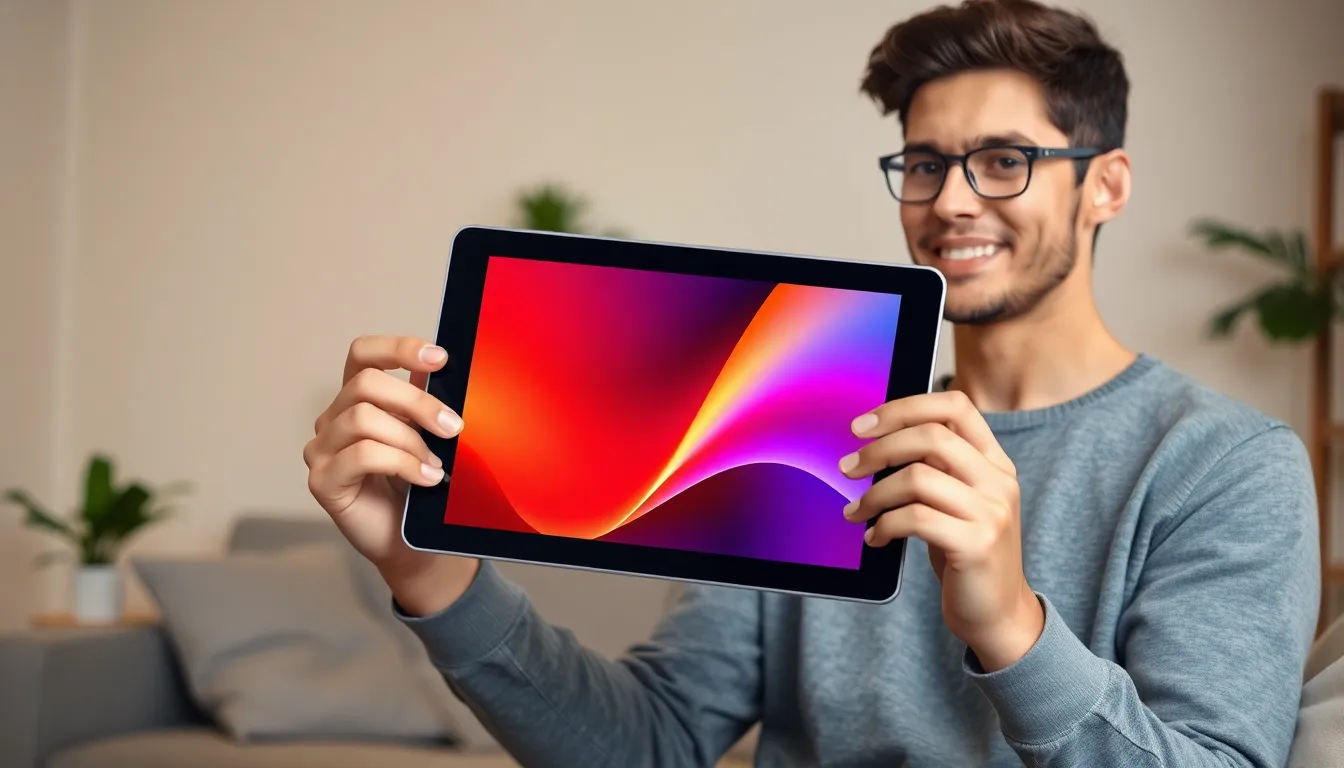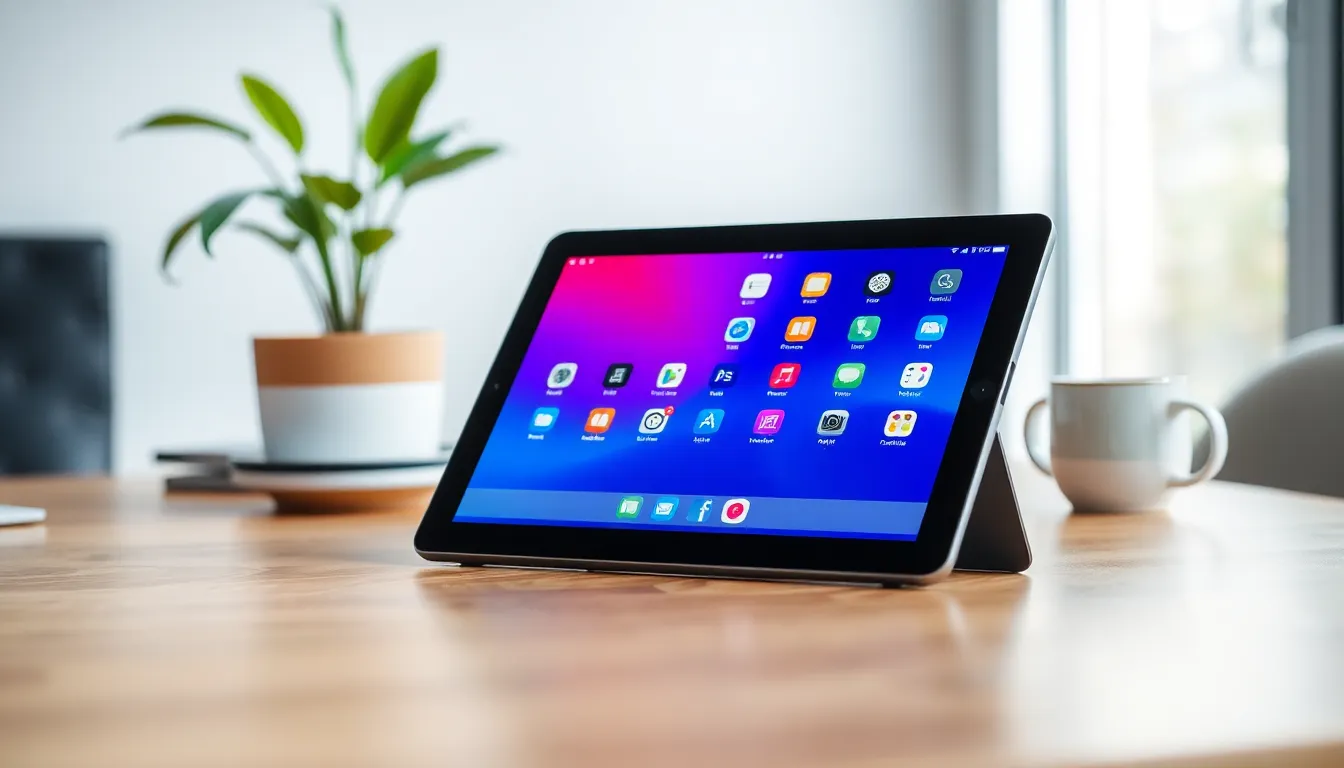In a world where technology evolves faster than a cat video goes viral, keeping your tablet updated is no longer just a suggestion—it’s a necessity. Imagine trying to navigate the latest apps on a device that thinks it’s still 2015. It’s like trying to use a flip phone in a smartphone party. Tablet updates not only enhance performance but also bring those shiny new features that make you feel like a tech wizard.
Table of Contents
ToggleOverview of Tablet Updates
Tablet updates play a critical role in maintaining system security and enhancing functionality. Manufacturers frequently release updates to fix bugs and improve performance. Updates also introduce new features, making devices more user-friendly and efficient.
Regular updates ensure that tablets meet compatibility requirements with new applications. Outdated software can lead to a slower interface and technical issues. Users might notice that updated devices run applications smoothly and provide a better overall experience.
Security enhancements are a key component of these updates. They protect devices from vulnerabilities that could compromise personal information. With cyber threats on the rise, keeping tablets updated becomes essential for data security.
Compatibility improvements further illustrate the importance of regular updates. Many apps roll out new versions requiring the latest operating systems. Users who delay updates may find themselves unable to access certain applications, limiting their device’s potential.
Battery optimization can also result from the latest updates. Manufacturers often include power management improvements to extend battery life. By ensuring regular updates, users can enjoy longer usage times between charges.
Tablet updates deliver significant advantages in performance, security, compatibility, and battery efficiency. Embracing these updates is crucial for maximizing the benefits offered by modern tablets.
Importance of Keeping Tablets Updated


Keeping tablets updated remains essential in today’s technological environment. Updates significantly enhance user experience, security, and overall device performance.
Security Enhancements
Security enhancements provide vital protection against evolving cyber threats. Updates often fix known vulnerabilities, enabling devices to withstand attacks. They introduce new security features designed to safeguard personal information. Regular updates ensure tablets remain compliant with security standards, which lowers the risk of data breaches. Manufacturers also patch software bugs that might compromise system integrity. As new threats emerge, updates adapt to counter them, making them indispensable for any tablet user.
Performance Improvements
Performance improvements result from regular updates that refine device functionality. They address bugs that can cause slowdowns or crashes, leading to more efficient operation. New features introduced in updates often enhance the user interface, creating a smoother experience. Compatibility with recent applications increases as updates roll out, ensuring access to the latest technologies. Updates can optimize processing power and memory management, allowing for faster multitasking. Users enjoy noticeable boosts in speed and efficiency with each update, making the experience more satisfying.
Major Tablet Update Releases
Tablet updates focus on enhancing performance, security, and user experience. Each platform has its unique approach to updates, providing distinctive features to users.
Apple iPadOS Updates
Apple regularly releases iPadOS updates to enhance user experience. Notably, features like improved multitasking and enhanced privacy settings become available. These updates maintain device security by patching vulnerabilities. Users often gain access to updated apps, productivity tools, and new functionalities with each release. Performance improvements also streamline tasks, making devices faster and more efficient. Emphasizing user feedback, Apple continuously refines the interface through these updates, ensuring seamless navigation.
Android Tablet Updates
Android tablet updates vary across manufacturers but generally prioritize performance. Users frequently receive security patches and bug fixes that protect their devices from threats. Enhanced battery life and improved app compatibility often come with these updates. Many manufacturers, such as Samsung and Lenovo, roll out custom features tailored to their tablet lines. Google also releases major Android version updates that introduce new functionalities and user interface upgrades. These updates contribute to a more responsive and efficient device experience.
Windows Tablet Updates
Windows tablets receive updates directly from Microsoft, ensuring users stay on the cutting edge. Major updates often introduce significant features that improve overall functionality. Performance enhancements focus on optimizing resources, which aids in multitasking. Security updates address potential vulnerabilities, safeguarding personal information. Additionally, Windows updates ensure compatibility with the latest software and applications. Users benefit from a consistent upgrade path, which enhances device longevity and usability.
User Experience After Updates
User experience significantly improves after tablet updates. Regular updates lead to a more intuitive and responsive user interface. Updated systems often introduce redesigned menus, optimized touch responsiveness, and customizable home screens. Enhanced visual elements may boost accessibility and streamline navigation. Users notice that smooth animations and transitions contribute to an overall enjoyable experience. Updates also fix previous bugs, which often cause frustrating glitches. As a result, the user interface becomes more consistent, making it easier for users to complete tasks effectively.
User Interface Changes
User interface changes frequently accompany tablet updates. Updated operating systems can introduce fresh designs that enhance usability. Many updates refine navigation and improve the overall aesthetic of the device. Icons may receive updates that make them more recognizable and vibrant. Transitions between applications can become seamless due to performance optimizations. Users often appreciate increased accessibility features, including options like adjustable text sizes and improved contrast settings. These changes can significantly elevate user satisfaction, making tablets more enjoyable to use daily.
App Compatibility
App compatibility typically expands with new tablet updates. Developers optimize applications to work seamlessly with the latest software versions. Updates ensure that widely used apps receive necessary patches, improving functionality and security. Many users find that performance issues are resolved, allowing apps to run smoothly. Incompatibilities often arise from outdated systems, which can hinder access to essential features. Consequently, regular updates eliminate these barriers, ensuring users enjoy the latest functionality in their favorite apps. These updates reinforce the necessity of keeping devices current for optimal performance and security.
Troubleshooting Common Update Issues
Tablets can face several update-related challenges. Users frequently encounter issues such as slow downloads and installation failures. Restarting the tablet often resolves these minor hiccups. Checking for a stable internet connection ensures downloads proceed without interruption.
Storage space plays a crucial role in the update process. Users might receive prompts indicating insufficient space. Deleting unused apps or media files frees up necessary storage for updates. Clearing the cache can also help eliminate temporary files that consume valuable space.
Another common problem involves error messages that appear during updates. These alerts can stem from software conflicts or system glitches. Performing a factory reset may rectify persistent issues, but this should only occur after backing up essential data.
Device compatibility is essential for a successful update. Users should verify that their model supports the latest software version. Tablet manufacturers typically provide guidelines on supported devices and update availability.
Battery life impacts the update process too. Tablets with low battery levels often refuse to install updates. Keeping the device charged above 50% before starting can mitigate this risk.
If problems persist, contacting customer support becomes necessary. Manufacturers can offer specific troubleshooting steps tailored to each device. Users should take note of error codes or messages, as these details expedite the support process.
Addressing common update issues involves understanding storage needs, ensuring compatibility, and maintaining a stable power source. These steps facilitate a smoother updating experience, enhancing tablet performance and user satisfaction.




